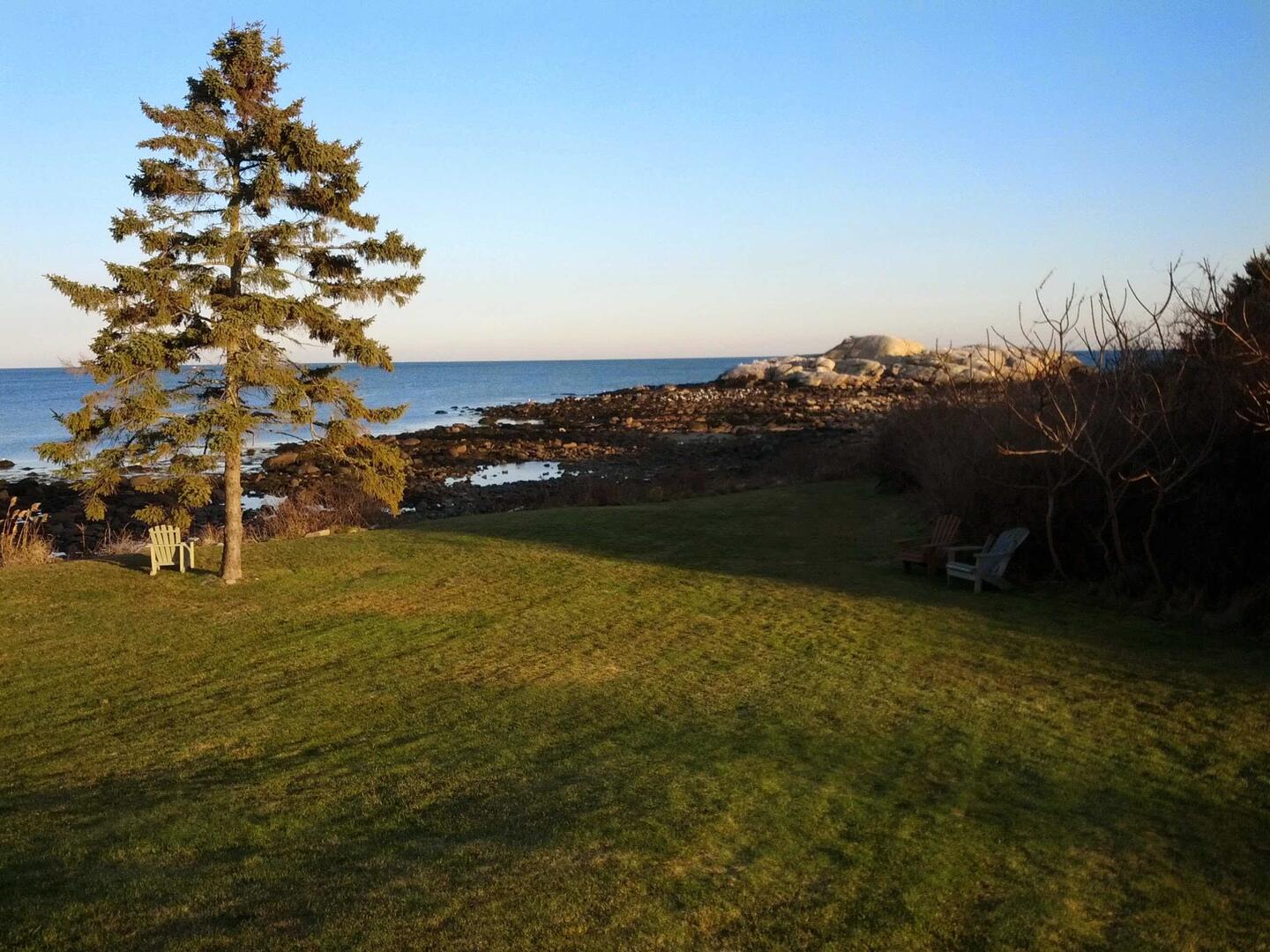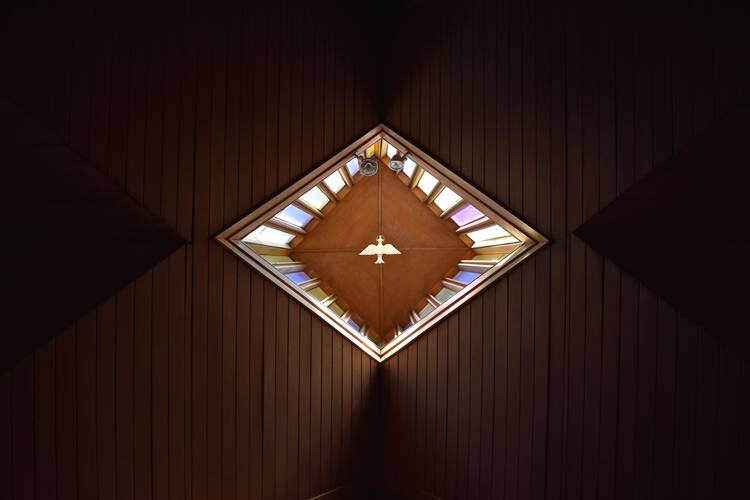“That tree is very important for me,” an older Jesuit said to me, almost 30 years ago. We were at Eastern Point Retreat House in Gloucester, Mass., standing on the broad lawn that overlooks the Atlantic Ocean. It was a bright day and the sun glinted off the water. He pointed to a lone evergreen tree, not that tall, leaning to one side, a bit battered.
New to the spiritual life, I had no idea what he was talking about. What’s an “important tree”? I suppressed the urge to laugh or make a joke.
My friend explained that on a retreat many years ago he had a profound spiritual experience while standing under that tree. Now, every time he came to Gloucester, he would see that tree and be reminded of what had happened. Not only the experience itself but the tree became “important” to him.

To me, it looked like any other tree. There were also taller, nobler, better trees all around us: the kind you might paint, take a photo of or put on a Christmas card. But not for my friend. For him, it was this little tree that carried all sorts of meaning, which he told me that he could not even describe adequately. Now, every time I see that tree, I think of my friend, who died 15 years ago.
Lately, I have noticed an increasing tendency for people to critique many such “important trees” in the spiritual life. It is hard to miss all the articles saying that this style of church architecture is boring, banal or wrong; that this kind of hymn is hackneyed, silly or not sufficiently reverent; that this kind of—take your pick: author, book, way of prayer, devotional practice, school of spirituality—is not Catholic enough. Modernist church architecture is a “curse.” Songs like “On Eagle’s Wings” are “theologically vague.” And so on.
De gustibus, of course. But a deeper and more serious issue is the critique or even condemnation of things that hold great spiritual meaning for individual believers.
In seeing the many things that move others, I have learned not to judge. The Holy Spirit knows better than I do.
My Catholic boyhood in the 1960s and 1970s in the suburbs of Philadelphia was filled with things that many people now judge as not only outmoded but bad: modern architecture that is too bland, folk hymns that are passé, styles of presiding that are rejected. It is easy to snigger at those things.
It is easy. It can also be dangerous.
Twenty years as a spiritual director, accompanying a wide variety of people in their spiritual journeys, has taught me many things. One of the most important is this: God meets people where they are. (Even that quote comes in for critique, believe it or not.) What moves one person may leave another person cold. What seems to me a dull book, a slapdash poem or a kitschy poster may be the very way that God encounters someone else. In seeing the many things that move others, I have learned not to judge. The Holy Spirit knows better than I do.
[Don’t miss more stories like this one. Sign up for our newsletter.]
Over the past few years, I have helped to lead annual pilgrimages to the Holy Land with upward of 100 people. At the end of each day, we gather to share our experiences of what moved us spiritually. It is always a source of wonder, even amusement, how different events, places and, yes, churches and hymns, affect individuals so differently. “I was so moved by the Church of the Nativity!” one person will say. “Didn’t do anything for me,” another will reply. “Too noisy!” If God meets people where they are, why criticize the places where God does that?
I imagine people hearing these critiques and discovering that something that they cherish—a hymn, a church, a work of art—is something that “experts” say they shouldn’t like.
The rule of reverence applies to everything in the spiritual life. You enjoy praying the Rosary? So do I. But I do not judge people who don’t. (St. Thérèse of Lisieux said that reciting the Rosary was for her as difficult as an “instrument of penance.”) Nor do I say that other devotional practices are not as “worthy.” You like High Masses? So do I. (My parish of the Church of St. Ignatius Loyola in New York has beautiful Solemn High Masses.) But I don’t critique the liturgies in the “Family Masses” or “Young Adult Masses.” You like St. Louis Jesuit hymns? So do I. (And I love “On Eagle’s Wings.”) But I don’t try to exalt them over other hymns.
Whenever I hear people who put down elements in the spiritual life, or worse, mock them, I find myself feeling sad. I imagine people hearing these critiques and discovering that something that they cherish—a hymn, a church, a work of art—is something that “experts” say they shouldn’t like. Or that “better educated” or “more discerning” or “more spiritual” people don’t approve of the very thing that brings them closer to God.
Whatever brings a person closer to God is holy—whether it’s a folk hymn like “All That I Am,” sung by a sister with a guitar, or “Tantum Ergo Sacramentum,” chanted by a monastery choir. Whether it’s a 1960s, blond-brick, A-frame church with abstract stained glass or Chartres Cathedral with soaring windows that you can find in an art history book. Whether it’s a faded print of the Sacred Heart that hung in your grandmother’s kitchen or a Caravaggio masterpiece that you once saw in a church in Rome. Whether it’s a book by Richard Rohr or Scott Hahn. All paths to God are to be reverenced.
So feel free to like and dislike whatever you want in your own spiritual life. But don’t feel free to tell other people what they are supposed to like and dislike. Because what you are doing is saying how the Holy Spirit should work, and that is never a good idea.
As a Jesuit novice, I was full of the overconfidence that entrance to a religious order sometimes instills in a person. But I am glad that, just that one time, going against my pride, I did not laugh when my friend told me about his favorite tree or tell him that he should prefer another one. Or enumerate the reasons why his tree could not hold a candle to the other, taller, better ones just a few feet away. The look on his face when he saw that tree shut me up.
And now, when I return to Eastern Point, I see that tree, and it’s important for me, too.
More from America:









